|
What is green cleaning?
“Green cleaning can be defined as “effective cleaning that protects health without harming the environment."
The federal government first defined “green” and “environmentally preferred purchasing” as “…products and services that have a lesser or reduced effect on human health and the environment when compared with competing products and services that serve the same purpose” with Executive Order 13101 in 1998.
This executive order has subsequently been superseded since 2007 by Executive Order 13423, which places additional emphasis on issues of sustainability and also considers product life cycles.
A holistic approach to green cleaning will incorporate solutions that consider human health and environmental impacts in a way that thoughtfully addresses:
- products, equipment and tools
- processes and procedures
- commitment to continuous improvement
WAXIE offers GPS® Green Partner Support™ for customers looking for a comprehensive approach to cleaning green.”
What does green cleaning mean to us?
Green cleaning is a comprehensive approach to cleaning that combines chemicals, equipment, tools, disposables, and, most importantly, processes, training, and communication to produce an effective and safe cleaning program.
How do I know what is “green” and what isn’t?
There are several third party organizations that define environmentally preferable ingredients, characteristics, and performance standards of products that we use to clean, as well as the buildings we are cleaning. Some of the most prominent and widely accepted guidelines include:
USGBC and LEED® (www.usgbc.org): 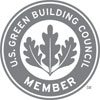 USGBC (U.S. Green Building Council) is a non-profit organization of representatives from across the building industry leading a national consensus for producing a new generation of buildings that deliver high performance inside and out. USGBC’s mission is “to promote buildings that are environmentally responsible, profitable and healthy places to live and work.” USGBC has developed the LEED (Leadership in Energy and Environmental Design) Green Building Rating System, which is a voluntary, consensus-based national standard for developing high-performance, sustainable buildings. LEED was created to define “green building” by establishing a common standard of measurement and to stimulate “green competition.” USGBC (U.S. Green Building Council) is a non-profit organization of representatives from across the building industry leading a national consensus for producing a new generation of buildings that deliver high performance inside and out. USGBC’s mission is “to promote buildings that are environmentally responsible, profitable and healthy places to live and work.” USGBC has developed the LEED (Leadership in Energy and Environmental Design) Green Building Rating System, which is a voluntary, consensus-based national standard for developing high-performance, sustainable buildings. LEED was created to define “green building” by establishing a common standard of measurement and to stimulate “green competition.”
A LEED for Existing Building: Operations & Maintenance project can earn credits toward green building certification by implementing a green cleaning program, and a LEED for New Construction project can earn an innovation credit by submitting a written green cleaning policy. Even if your facility is not pursuing LEED certification, LEED for Existing Buildings can still be used as a guide to describe best practices in operations and maintenance of a facility.
The United States Environmental Protection Agency (EPA) (www.epa.gov/cpg/): T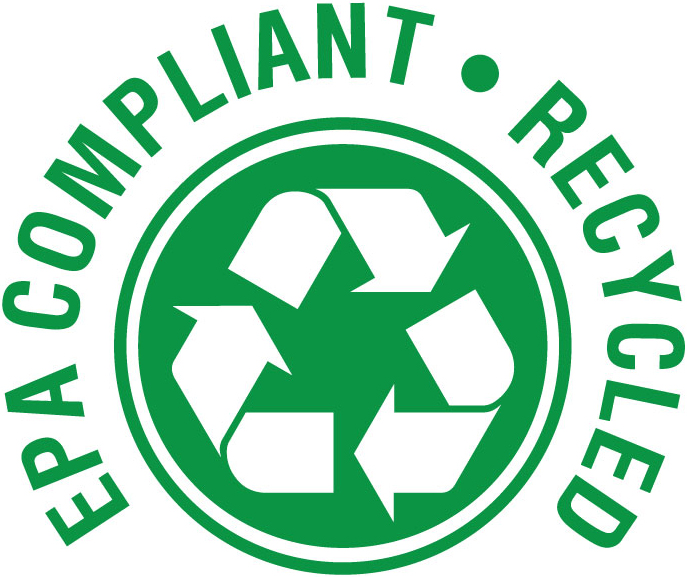 he EPA is a federal agency whose mission is “to protect human health and the environment.” CPG is the federal government's buy-recycled program and is authorized by Congress under the Resource Conservation and Recovery Act (RCRA). EPA is required to designate products that are or can be made with recovered materials and to recommend practices for buying these products, including ranges of post consumer and total recovered materials content. Once a product is designated, procuring agencies are required to purchase it with the highest recovered material content level practicable. CPG-designated products from the cleaning industry include paper towels (40-60% postconsumer fiber), bathroom tissue (20-60% postconsumer fiber), and plastic trash bags (10-100% postconsumer content).CPG is referenced as the requirement to meet in the Sustainable Cleaning Products & Materials section of the LEED for Existing Buildings: Operations & Maintenance Green Building Rating System. he EPA is a federal agency whose mission is “to protect human health and the environment.” CPG is the federal government's buy-recycled program and is authorized by Congress under the Resource Conservation and Recovery Act (RCRA). EPA is required to designate products that are or can be made with recovered materials and to recommend practices for buying these products, including ranges of post consumer and total recovered materials content. Once a product is designated, procuring agencies are required to purchase it with the highest recovered material content level practicable. CPG-designated products from the cleaning industry include paper towels (40-60% postconsumer fiber), bathroom tissue (20-60% postconsumer fiber), and plastic trash bags (10-100% postconsumer content).CPG is referenced as the requirement to meet in the Sustainable Cleaning Products & Materials section of the LEED for Existing Buildings: Operations & Maintenance Green Building Rating System.
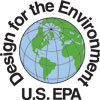 EPA Design for the Environment (DfE) Program (www.epa/gov/dfe/): The Design for the Environment (DfE) is the US EPA's label for safer chemical-based products. The DfE Safer Product Labeling Program advances EPA's mission to protect human health and the environment. The program uses EPA's chemical expertise and resources to carefully evaluate products and to label only those that have met the program's highly protective Standard for Safer Cleaning Products and stringent safer ingredient criteria. By allowing use of the logo on products, EPA empowers consumers and commercial purchasers to select safer chemical products that do not sacrifice quality or performance and that are safer for people and the planet. DfE labels a wide variety of chemical-based products, like all-purpose and specialty cleaners, laundry detergents, and carpet and floor care products. In addition, DfE has teamed with the GreenBlue Institute to develop the CleanGredients database, which uses the DfE methodology and “green screen” to identify safer chemicals for cleaning products (see www.CleanGredients.org <http://www.CleanGredients.org> ). Look for the Design for the Environment logo when you shop or procure products and join a national campaign to protect human and environmental health. EPA Design for the Environment (DfE) Program (www.epa/gov/dfe/): The Design for the Environment (DfE) is the US EPA's label for safer chemical-based products. The DfE Safer Product Labeling Program advances EPA's mission to protect human health and the environment. The program uses EPA's chemical expertise and resources to carefully evaluate products and to label only those that have met the program's highly protective Standard for Safer Cleaning Products and stringent safer ingredient criteria. By allowing use of the logo on products, EPA empowers consumers and commercial purchasers to select safer chemical products that do not sacrifice quality or performance and that are safer for people and the planet. DfE labels a wide variety of chemical-based products, like all-purpose and specialty cleaners, laundry detergents, and carpet and floor care products. In addition, DfE has teamed with the GreenBlue Institute to develop the CleanGredients database, which uses the DfE methodology and “green screen” to identify safer chemicals for cleaning products (see www.CleanGredients.org <http://www.CleanGredients.org> ). Look for the Design for the Environment logo when you shop or procure products and join a national campaign to protect human and environmental health.
Green Seal (www.greenseal.org): 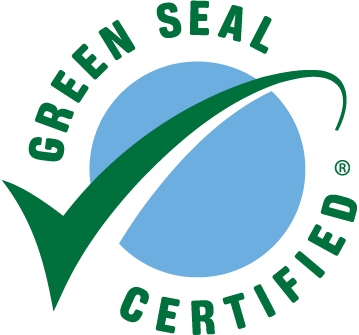 Green Seal is an independent, non-profit organization that strives to achieve a healthier and cleaner environment by identifying and promoting products and services that cause less toxic pollution and waste, conserve resources and habitats, and minimize global warming and ozone depletion. Green Seal’s mission: “To achieve a more sustainable world by promoting environmentally responsible production, purchasing and products.” Green Seal has standards for several categories including Industrial & Institutional Cleaners (GS-37), Industrial & Institutional Floor Care Products (GS-40), and Industrial & Institutional Hand Cleaners (GS-41), just to name a few. Green Seal certifies products and services that meet certain performance and environmental impact qualifications. Green Seal certification is referenced as a requirement to meet for several categories of cleaning products in the Sustainable Cleaning Products and Materials section of the LEED for Existing Buildings: Operations & Maintenance Green Building Rating System. Green Seal is an independent, non-profit organization that strives to achieve a healthier and cleaner environment by identifying and promoting products and services that cause less toxic pollution and waste, conserve resources and habitats, and minimize global warming and ozone depletion. Green Seal’s mission: “To achieve a more sustainable world by promoting environmentally responsible production, purchasing and products.” Green Seal has standards for several categories including Industrial & Institutional Cleaners (GS-37), Industrial & Institutional Floor Care Products (GS-40), and Industrial & Institutional Hand Cleaners (GS-41), just to name a few. Green Seal certifies products and services that meet certain performance and environmental impact qualifications. Green Seal certification is referenced as a requirement to meet for several categories of cleaning products in the Sustainable Cleaning Products and Materials section of the LEED for Existing Buildings: Operations & Maintenance Green Building Rating System.
EcoLogo (www.ecologo.org): 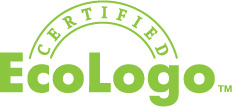 EcoLogoCM is a third-party ecolabelling program and the only standard in North America approved by the Global Ecolabelling Network, an international association of ecolabelling programs, as meeting the ISO 14024 environmental labelling standard. Like the U.S. government’s Energy Star Program, EcoLogoCM was originally founded by the Canadian government and is now widely used across North America. EcoLogoCM provides a market incentive to manufacturers and suppliers of environmentally preferable products and services in more than 120 product categories (more than 7,000 products currently certified), and thereby helps purchasers, consumers identify products and services that are less harmful to human health and the environment. EcoLogoCM certification provides the assurance that those products and services meet stringent environmental standards that have been verified by a third party auditor. EcoLogoCM has many standards for cleaning products including Floor Care Products (CCD-147), Hardsurface Cleaners (CCD-146), Hand Cleaners (CCD-104), Carpet & Upholstery Cleaners (CCD-148) among many others. EcoLogoM was established in 1988 and today is one of the most recognizable ecolabels in North America. EcoLogo certification is referenced as a requirement to meet for several categories of cleaning products in the Sustainable Cleaning Products and Materials section of the LEED for Existing Buildings: Operations & Maintenance Green Building Rating System. EcoLogoCM is a third-party ecolabelling program and the only standard in North America approved by the Global Ecolabelling Network, an international association of ecolabelling programs, as meeting the ISO 14024 environmental labelling standard. Like the U.S. government’s Energy Star Program, EcoLogoCM was originally founded by the Canadian government and is now widely used across North America. EcoLogoCM provides a market incentive to manufacturers and suppliers of environmentally preferable products and services in more than 120 product categories (more than 7,000 products currently certified), and thereby helps purchasers, consumers identify products and services that are less harmful to human health and the environment. EcoLogoCM certification provides the assurance that those products and services meet stringent environmental standards that have been verified by a third party auditor. EcoLogoCM has many standards for cleaning products including Floor Care Products (CCD-147), Hardsurface Cleaners (CCD-146), Hand Cleaners (CCD-104), Carpet & Upholstery Cleaners (CCD-148) among many others. EcoLogoM was established in 1988 and today is one of the most recognizable ecolabels in North America. EcoLogo certification is referenced as a requirement to meet for several categories of cleaning products in the Sustainable Cleaning Products and Materials section of the LEED for Existing Buildings: Operations & Maintenance Green Building Rating System.
Carpet and Rug Institute Green Label Certification (www.carpet-rug.org):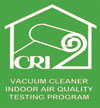 The Carpet & Rug Institute (CRI) is the national trade organization representing the carpet and rug industry. In an effort to promote better indoor air quality, CRI has developed the Green Label certification for carpet, cushion, adhesives and vacuum cleaners. To qualify for Green Label, vacuum cleaners must go through a stringent testing process that measures three key performance factors: soil removal, dust containment and carpet appearance retention. CRI Green Label vacuum cleaners, and other equipment that is demonstrably better for indoor air quality, are referenced as a requirement to meet in the Sustainable Cleaning Equipment section of the LEED for Existing Buildings: Operations & Maintenance Green Building Rating System. The Carpet & Rug Institute (CRI) is the national trade organization representing the carpet and rug industry. In an effort to promote better indoor air quality, CRI has developed the Green Label certification for carpet, cushion, adhesives and vacuum cleaners. To qualify for Green Label, vacuum cleaners must go through a stringent testing process that measures three key performance factors: soil removal, dust containment and carpet appearance retention. CRI Green Label vacuum cleaners, and other equipment that is demonstrably better for indoor air quality, are referenced as a requirement to meet in the Sustainable Cleaning Equipment section of the LEED for Existing Buildings: Operations & Maintenance Green Building Rating System.
Carpet and Rug Institute Seal of Approval (www.carpet-rug.org): 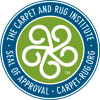 CRI has a Seal of Approval for carpet extraction cleaners. The CRI Seal of Approval program tests the effectiveness of carpet cleaning equipment and certifies deep cleaning extractors that effectively remove soil without damage to the carpet. To qualify for the Seal of Approval, carpet extractors must meet stringent standards in three key performance factors: soil removal, residual water and moisture removal, and carpet appearance retention. Based on performance, the extractors are awarded either Gold, Silver or Bronze Level Seal of Approval. Carpet extractors that have earned the CRI Seal of Approval are referenced as a requirement to meet in the Sustainable Cleaning Equipment section of the LEED for Existing Buildings: Operations & Maintenance Green Building Rating System. CRI has a Seal of Approval for carpet extraction cleaners. The CRI Seal of Approval program tests the effectiveness of carpet cleaning equipment and certifies deep cleaning extractors that effectively remove soil without damage to the carpet. To qualify for the Seal of Approval, carpet extractors must meet stringent standards in three key performance factors: soil removal, residual water and moisture removal, and carpet appearance retention. Based on performance, the extractors are awarded either Gold, Silver or Bronze Level Seal of Approval. Carpet extractors that have earned the CRI Seal of Approval are referenced as a requirement to meet in the Sustainable Cleaning Equipment section of the LEED for Existing Buildings: Operations & Maintenance Green Building Rating System.
GREENGUARD (www.greenguard.org):   GREENGUARD Environmental Institute (GEI) is an industry-independent, non-profit organization that oversees the GREENGUARD certification program. GEI’s mission is “to improve public health and quality of life through programs that improve indoor air.” GEI establishes acceptable indoor air standards for indoor products, environments and buildings. GEI has product certification programs for low emitting interior building materials, furnishings and finish systems, as well as cleaning products and systems, including a program for Children & Schools that identifies products certified for use in educational environments. GREENGUARD Environmental Institute (GEI) is an industry-independent, non-profit organization that oversees the GREENGUARD certification program. GEI’s mission is “to improve public health and quality of life through programs that improve indoor air.” GEI establishes acceptable indoor air standards for indoor products, environments and buildings. GEI has product certification programs for low emitting interior building materials, furnishings and finish systems, as well as cleaning products and systems, including a program for Children & Schools that identifies products certified for use in educational environments.
Scientific Certification Systems (www.scscertified.com): 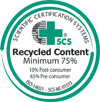 SCS launched the Environmental Claims Certification Program in 1990 as one of the nation’s first scientific program for independently certifying environmental claims on manufactured goods and materials. All claims are certified in accordance with US Federal Trade Commission Environmental Marketing Claims guidelines, and ISO-14021 standards for environmental claims. The SCS certification logo appears on thousands of individual products and helps businesses, government agencies and consumers to make the best-informed decisions. Through SCS’s Material Content certification programs, manufacturers earn the right to label products with SCS third-party certification, verifying claims including recycled, reclaimed, salvaged, and bio-based materials content. SCS launched the Environmental Claims Certification Program in 1990 as one of the nation’s first scientific program for independently certifying environmental claims on manufactured goods and materials. All claims are certified in accordance with US Federal Trade Commission Environmental Marketing Claims guidelines, and ISO-14021 standards for environmental claims. The SCS certification logo appears on thousands of individual products and helps businesses, government agencies and consumers to make the best-informed decisions. Through SCS’s Material Content certification programs, manufacturers earn the right to label products with SCS third-party certification, verifying claims including recycled, reclaimed, salvaged, and bio-based materials content.
|